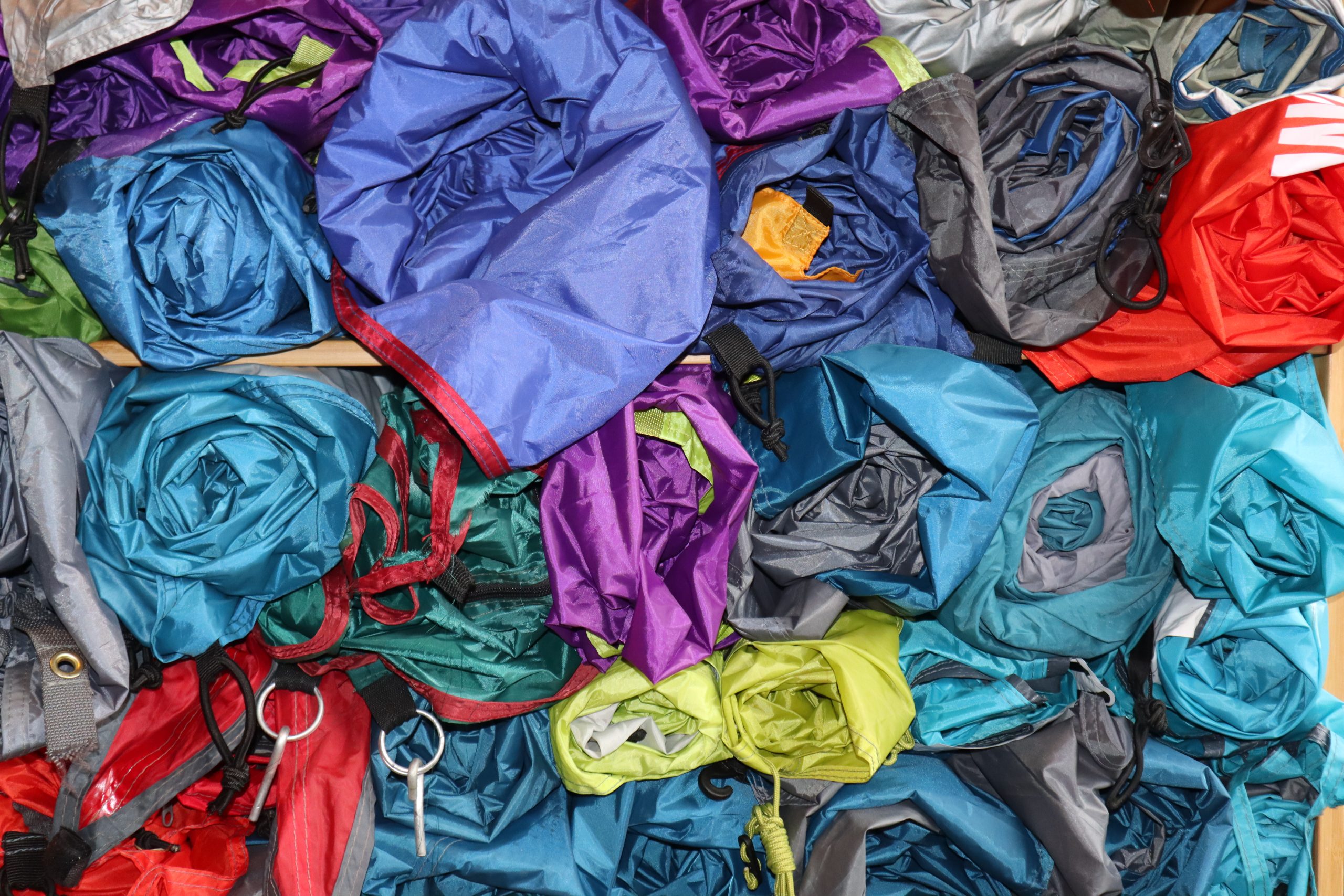IT ALL STARTED WITH A FIELD FULL OF RUBBISH. IT WAS NEW YEAR’S DAY 2020, AND RUBY URQUHART WAS HELPING WITH THE CLEAN-UP AFTER THE RHYTHM & ALPS MUSIC FESTIVAL, IN THE CARDRONA VALLEY.

Scattered amongst the usual post-party detritus (beer cans, vape cartridges, flickering smart phones with shattered screens), there were a heck of a lot of tents. Ruby had seen this before, at the Glastonbury Festival, where the sight of bulldozers pushing around mounds of nylon had stuck with her.

Cheap, single use tents are a big part of the problem. According to The Times UK, the Association of Independent Festivals estimates that about 250,000 tents are left behind after music festivals in the United Kingdom every year. The numbers are smaller in Aotearoa (at Rhythm & Alps it’s about 250), but the problem is the same. Businesses like The Warehouse will sell you a tent for 35 bucks that will last for a long weekend and then take about 10,000 years to break down in a landfill. Yes, that is four zeros after the one.
Rhythm & Alps has been aware of the issue for some time. Organisers have tried various initiatives over the years to discourage people from abandoning their tents, from tagging their outer walls with stencil art to make them collector’s items, to offering Kartents, flatpacked recyclable cardboard shelters as a camping upgrade.
Still, the tent wasting persists, as Ruby saw during her stint with the R&A rubbish team. So she started collecting them. At first, she kept “all the random stuff people left behind that I thought I might be able to do something with,” including plastic goods like air mattresses. She eventually narrowed her focus to just tents, amassing about 100 before figuring out just what she was going to make. “It took time for a good use to reveal itself,” Ruby says.
The solution came in the form of colourful one-off puffer jackets and vests. The outers are made from the tent nylon, while the insides are a combination of materials, including filling from op shop pillows and Dacron offcuts from upholstery businesses. “I used as many waste materials as possible, and when I couldn’t use waste, I went second hand.” The only thing new on the jackets are the zips. She called the collection No New Material Needed (NNMN).

It wasn’t the 27-year old’s first rodeo with reuse. Her day job is at Creative Junk, a recycling centre in Christchurch, and she ran her own op shop in her hometown of Wānaka when she was still in high school. And NNMN is part of a bigger project, Broken.Ruby studied art at The Learning Connexion and was a painter before shifting her focus to textiles. She launched Broken two years ago.
The name came from a list Ruby wrote of broken things that could be reused, and the possible uses for them; the founding ethos was to make new things without utilising new material. “There is an abundance of useful material being thrown out every day,” Ruby points out, “and there’s so much waste involved in clothing. Fast fashion is horrendous.” Instead, through the thoughtful process of collecting resources from different industries, “their potential as an appropriate use reveals itself.”
Her first Broken project started with used inner tubes from bike tyres, which, like the tents, she started to collect before knowing exactly what she was going to do with them. The eventual outcome was a line of rubber bags and a range of fetish wear, which as well as being strikingly clever from an engineering point of view, is as beautiful as it is hot.
The jackets, she says, are a nice change after all that black. “I enjoy how colourful they are. The tents have become loud, fun and cosy jackets,” Ruby says. No New Material Needed launched at the Wānaka art and fashion marketplace 56Rocket in July, and is now available at The Service Depot boutique in Wellington and Guild in Dunedin.

Ruby says she may go on to make more jackets, depending on sales, though maybe that’s not the point. Now that her collected tents have become wearables, she says, “I can’t help but think about the other 10 skips full that got thrown out the years that I was collecting them. It would be dope to get people to stop leaving their tents, and be more aware of what they are throwing out. It may have its uses.”
WORDS: LAURA WILLIAMSON
PHOTOS: SUPPLIED

